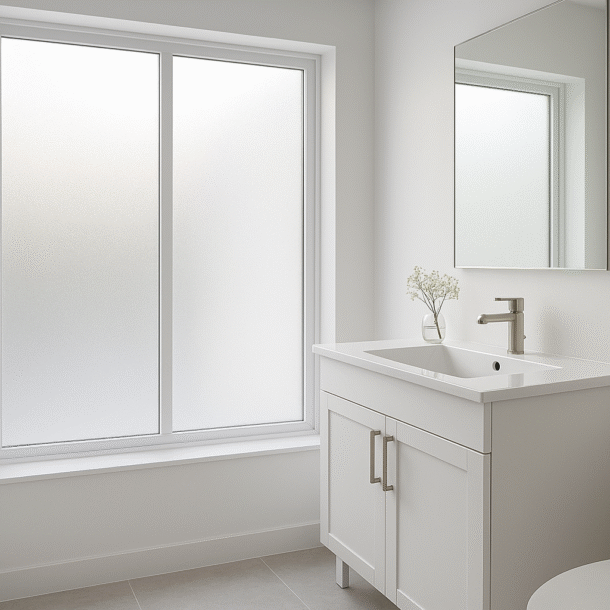
Commercial spaces in 2025 are redefining how design meets sustainability. From eco-friendly materials to fast, low-disruption renovations, door resurfacing has become the preferred way to refresh interiors without the cost or waste of full replacement.
At Engineered Group, we’ve spent more than 25 years helping property owners, architects, and contractors modernize commercial doors using sustainable, low-VOC coatings and architectural finishes. Whether for office towers, healthcare facilities, or hospitality brands, our refinishing process combines beauty, durability, and environmental responsibility.
Replacing hundreds of interior doors in a commercial facility is expensive, disruptive, and environmentally taxing. In 2025, architects and property managers are rethinking their approach—favoring door resurfacing and refinishing solutions that preserve the existing structure while applying cutting-edge design films and coatings.
Key reasons for this shift include:
According to the U.S. Environmental Protection Agency (EPA), using low-emission coatings and finishes can drastically reduce indoor air pollutants and improve occupant health (source: EPA.gov).
Modern sustainable door finishes are engineered to perform as beautifully as they look. 2025 is seeing emerging innovations designed for commercial, hospitality, and healthcare environments.
These finishes use significantly fewer volatile organic compounds, ensuring healthier air quality while meeting LEED compliance standards. They come in matte, satin, and high-gloss options that mimic wood, stone, and metal textures.
High-performance vinyl and door wrap films for renovation now use recyclable or bio-based content. They resist wear, impact, and UV discoloration—ideal for high-traffic spaces like corridors or elevator cabs.
2025’s fire-rated door film options combine safety with sustainability. New-generation coatings integrate antimicrobial protection, perfect for healthcare facilities where hygiene and compliance are top priorities.
Matching finishes across door and cab panels creates cohesive interior branding. Architectural resurfacing films make this uniformity achievable without the logistical challenges of full replacement.
Commercial door resurfacing is a precise, multi-step process that can often be completed onsite with minimal disruption:
This process typically takes 1–2 hours per door, compared to several days for full replacement.
| Option | Average Cost per Door | Downtime | Environmental Impact | Typical Lifespan |
| Full Door Replacement | $600–$1,000+ | Multiple days | High (material waste, landfill) | 10–15 years |
| Door Resurfacing/Refinishing | $150–$350 | 1–2 hours | Low (minimal waste) | 8–10 years |
Result: Door resurfacing delivers up to 70% cost savings and significantly lower carbon impact.
Designers favor warm woods and organic textures using architectural door finishes that capture the look of natural materials without relying on real timber.
Metallic laminates in bronze, pewter, and champagne tones bring sleek sophistication to corporate and hospitality interiors.
Advanced eco-friendly door coatings now incorporate self-healing layers that resist scratches and fingerprints—an ideal solution for high-touch surfaces.
Health-focused interiors use calm, nature-inspired hues paired with low-VOC materials that align with green building initiatives.
For over 25 years, Engineered Group has partnered with architects, contractors, and property owners nationwide to deliver architectural resurfacing and door refinishing projects on time and on budget. Our proven track record includes work with leading hotel brands, universities, and healthcare networks seeking performance-driven and sustainable renovation solutions.
Clients consistently commend our attention to detail, project cleanliness, and ability to deliver premium finishes without disrupting operations. We are certified installers of Class A fire-rated materials and authorized applicators for top architectural film manufacturers, ensuring both beauty and compliance.
Door resurfacing represents the intersection of design innovation and environmental stewardship. As 2025 ushers in a new era of sustainable commercial interiors, partnering with an experienced provider ensures both compliance and creativity.
Ready to revitalize your doors sustainably?
Contact Engineered Group today for a free consultation or quote on your commercial door refinishing project.
Door resurfacing is revolutionizing 2025 commercial interiors by combining sustainability, speed, and style. Instead of replacing doors, businesses now use eco-friendly, low-VOC coatings and architectural films to achieve modern aesthetics at a fraction of the cost. This process reduces landfill waste, supports LEED compliance, and takes just hours per door. Engineered Group leads the industry with certified fire-rated materials and 25+ years of refinishing expertise, helping offices, hotels, and healthcare spaces revitalize their interiors responsibly.
Q1: How long does a resurfaced door last?
Properly installed finish films and coatings can last 8–10 years, depending on wear conditions and upkeep.
Q2: Can you match existing wood or metal tones?
Yes, advanced architectural door finishes replicate almost any tone or texture, making them ideal for partial upgrades.
Q3: Are resurfaced doors compliant with fire codes?
With certified fire-rated films and sealing methods, resurfaced doors remain compliant while maintaining visual consistency.
Q4: What makes resurfacing more sustainable than replacement?
Resurfacing prevents structural waste, reduces emissions from new manufacturing, and minimizes chemical exposure from repainting.
Q5: Can door resurfacing be done while facilities are occupied?
Yes, most resurfacing projects use low-odor, quick-curing materials that allow work to be completed with minimal disruption. This makes it ideal for hospitals, offices, and hotels that need to remain operational.
Q6: What maintenance is required after resurfacing?
Resurfaced doors require only simple care—regular dusting and gentle cleaning with non-abrasive products. Harsh chemicals should be avoided to maintain the finish’s longevity and appearance.